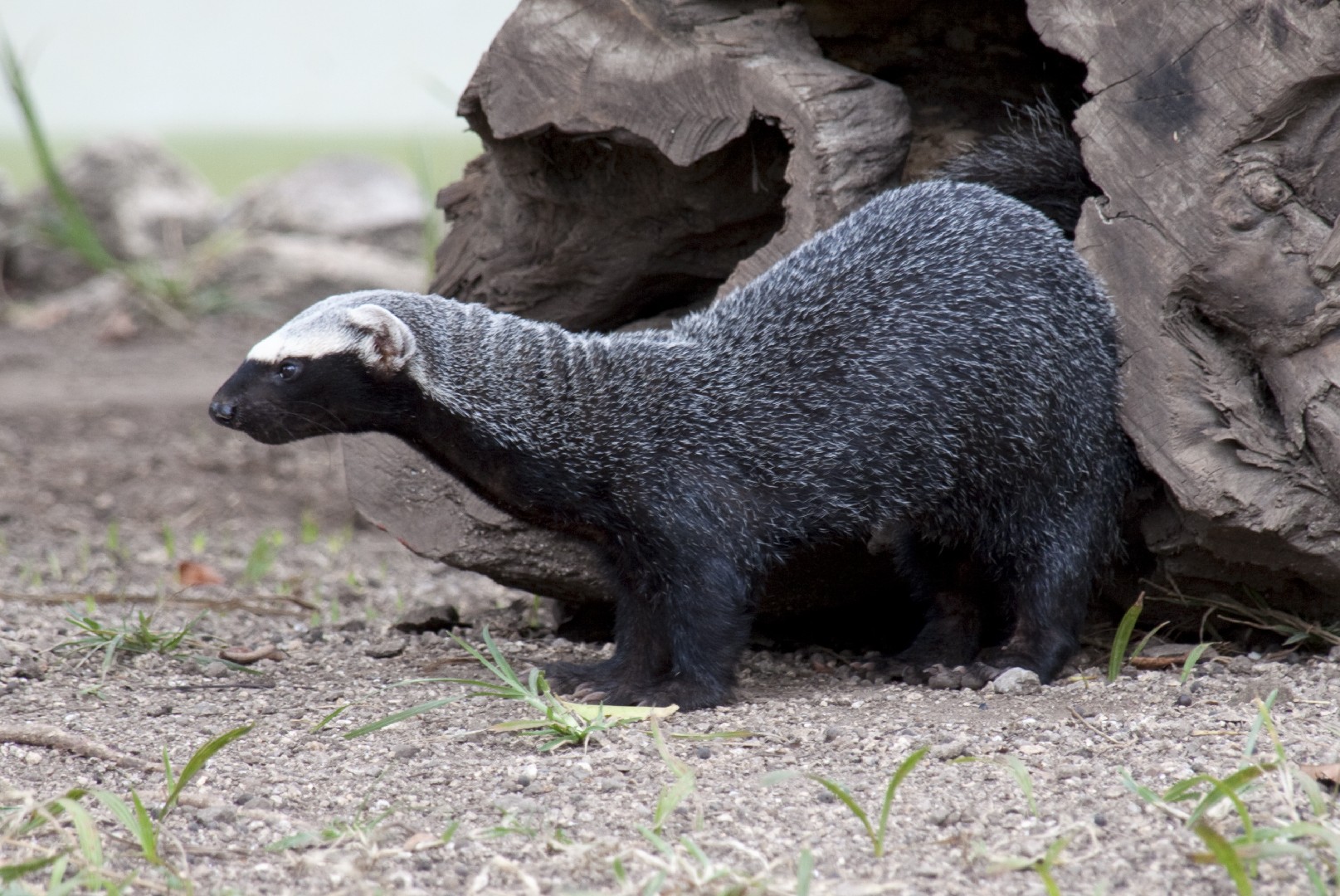Greater grison
A species of Grisons Scientific name : Galictis vittata Genus : Grisons
Greater grison, A species of Grisons
Scientific name: Galictis vittata
Genus: Grisons
Content
Description General Info
 Photo By Tony Hisgett , used under CC-BY-2.0 /Cropped and compressed from original
Photo By Tony Hisgett , used under CC-BY-2.0 /Cropped and compressed from original Description
The greater grison is a slender animal with short legs, a long neck, and a short, bushy tail. They are similar in appearance to the closely related lesser grison, from which they can be most readily distinguished by their greater size, with a head-body length ranging from 45 to 60 centimetres (18 to 24 in). Adults weigh between 1.5 and 3.8 kilograms (3.3 and 8.4 lb) in the wild, but may become larger when reared in captivity. The back, flanks, top of the head, and the tail, are grizzled grey in color, while the rest of the body is much darker, and usually solid black. A narrow whitish stripe separates the darker and lighter fur on the head and shoulder, but not further back, where the two colors may, in some individuals, blur into one another. The tail is 14 to 20 centimetres (5.5 to 7.9 in) long, and covered with bushy hair similar in color to that on the animal's back. The head is flattened and broad, with short, rounded ears, and dark brown to black eyes. The legs are muscular, with five webbed toes, each ending in a sharp, curved claw. 
General Info
Lifespan
7-10 years
Diet
Greater grison predominantly consumes both plant and animal matter, accounting for its omnivorous dietary habits. Key constituents include fruits, eggs, small vertebrates, and particularly, invertebrates, demonstrating its opportunistic feeding behavior.
Appearance
Greater grison has a sleek, weasel-like body around 60 cm long, including the bushy tail. Its short fur is predominantly black and white on the upper body, creating a distinctive two-tone pattern, whereas its belly side fur is grayish. From nose to ears, a faint stripe runs, enhancing its sharp face. No significant differences are noted according to age or gender.
Behavior
Greater grison exhibits largely solitary and nocturnal behaviors, known for their ground-dwelling lifestyle marked by burrowing and foraging for insects, small animals, and fruits. They use scent-marking to delineate territory, demonstrating some territoriality. Uniquely precise pouncing on prey, observed within this species, underlines its survival adaptations.
Population
Stable
Scientific Classification
Phylum
Chordates Class
Mammals Order
Carnivores Family
Mustelids Genus
Grisons Species
Greater grison